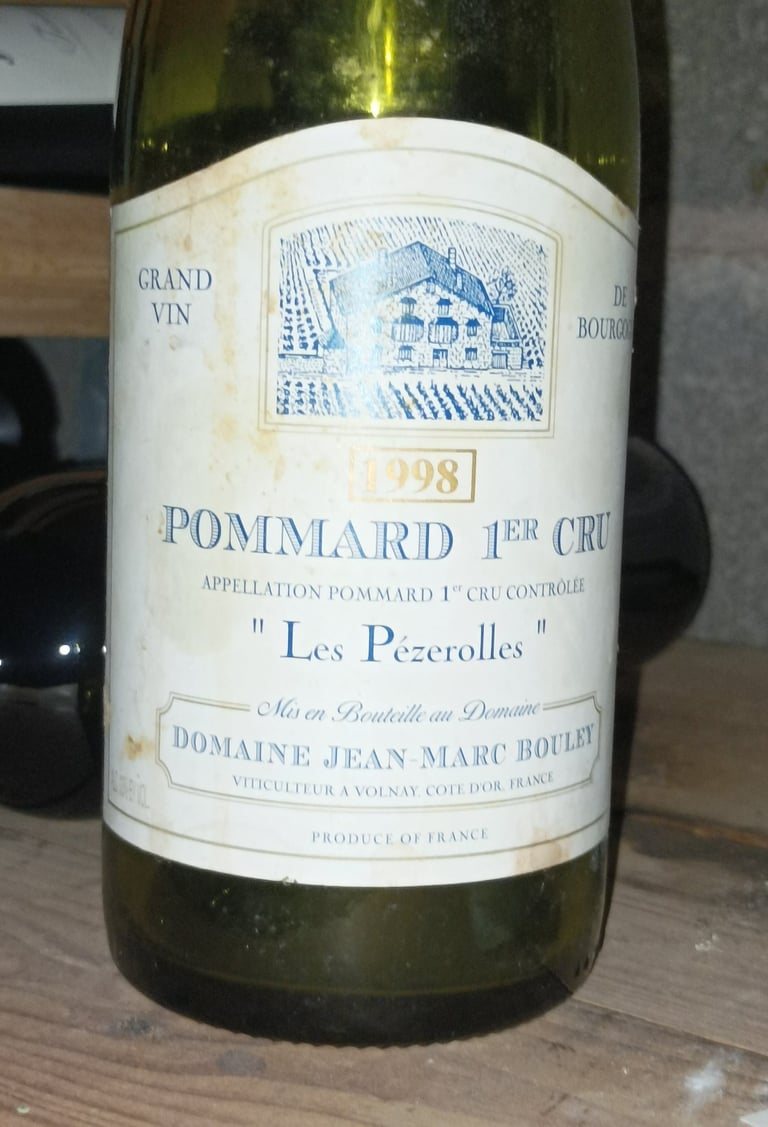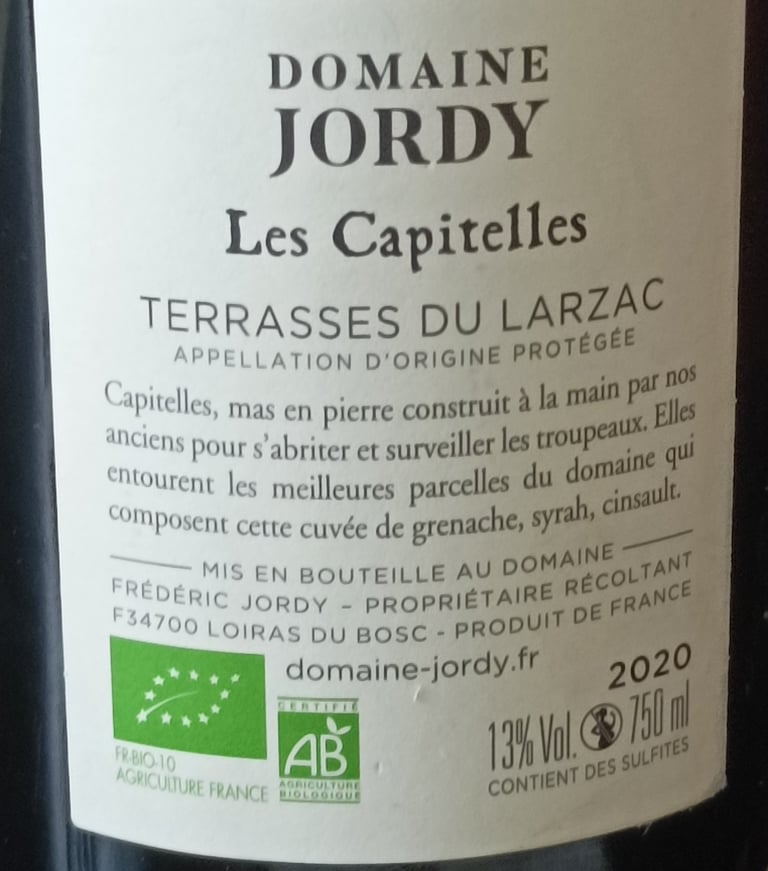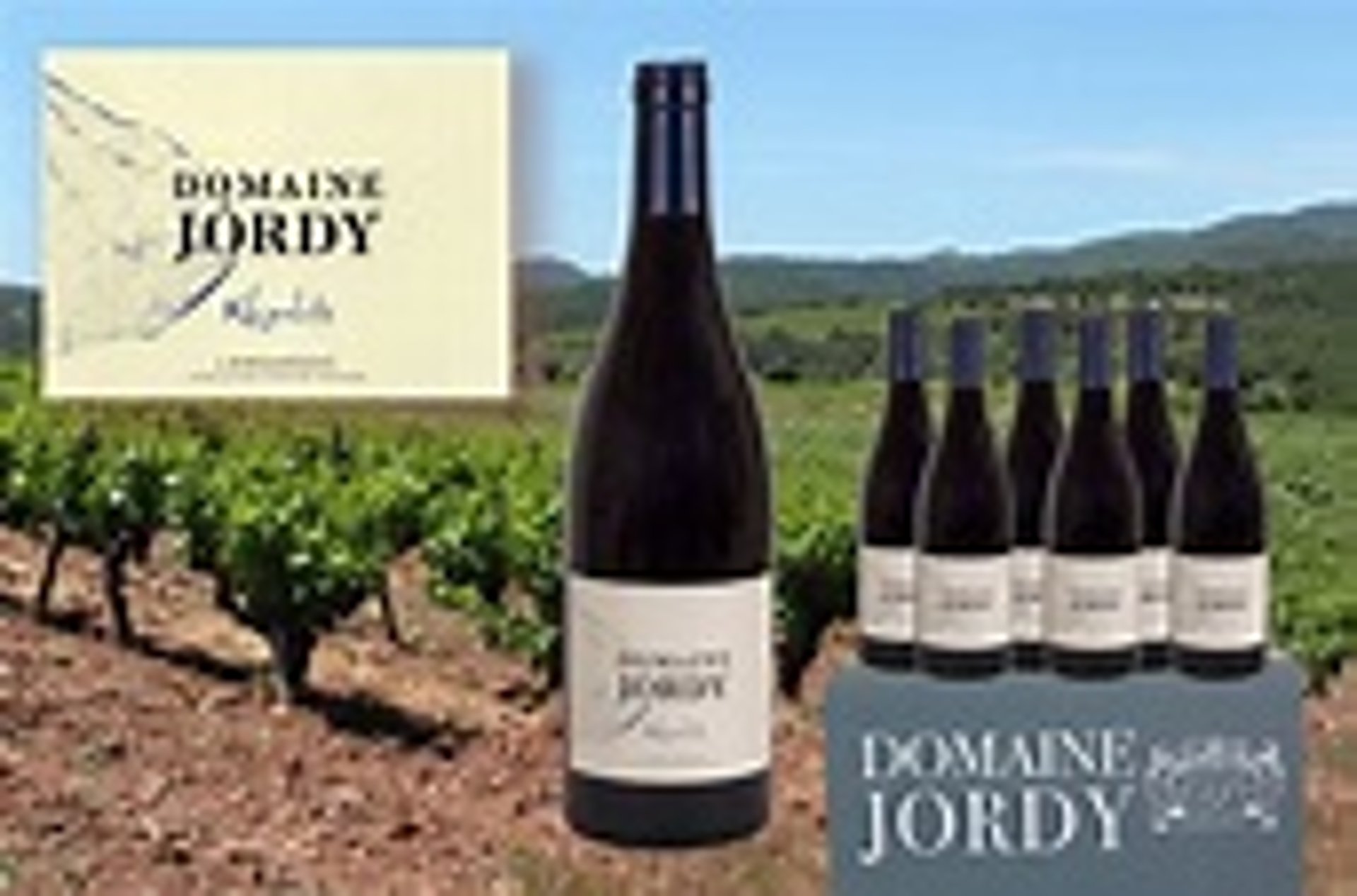
Chateau Bottled or Cave Cooperative?
Take your choice
FOOD, WINE AND HOME
Joan
6/22/20233 min read
When you buy a bottle of wine that states that it is 'Chateau Bottled,' or perhaps 'mise en bouteille au domaine,' I wonder what you picture. The reality may be a very different from how you imagine. This was brought home to me earlier this year when an exceedingly long lorry and trailer pulled up by the edge of the road in our adjacent village.
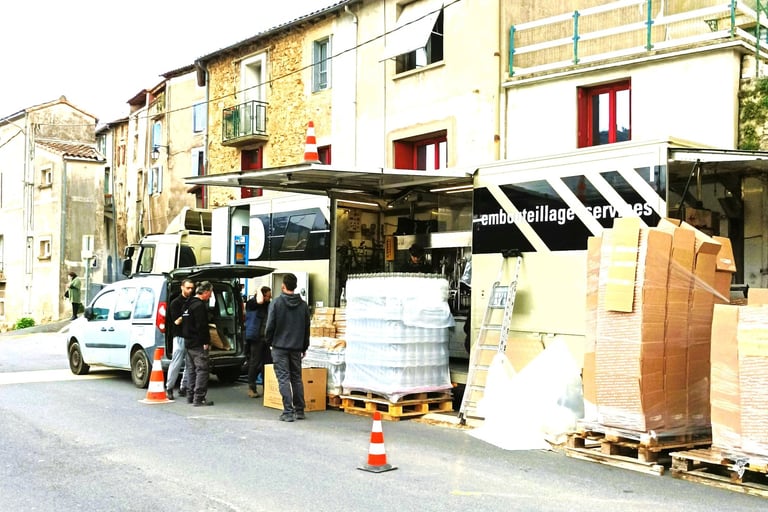

A large centre panel was raised, to reveal the complete works inside.

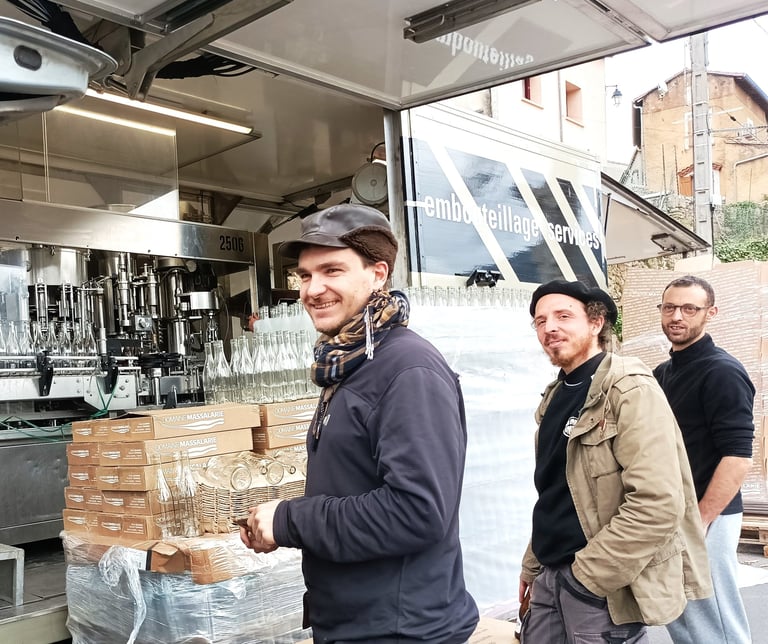
Up went the tail panel too , et voilà: soon the end product would appear, ready to be cradled in cardboard inserts, before being placed in larger cartons. There was also a large roll of plastic shrink wrap.


Days before, thousands of empty bottles had arrived and were stacked by the side of the road. Now boxes of corks, capsules and specially printed labels were waiting in readiness alongside the trailer.
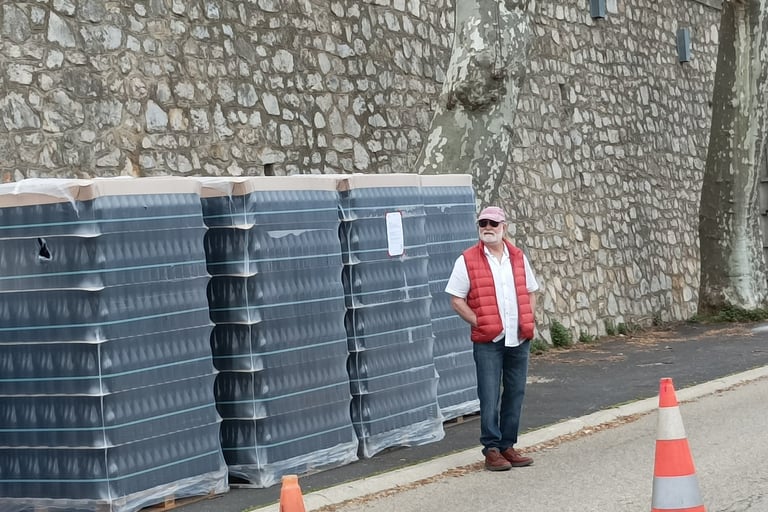

Cones had been placed to warn passing vehicles, and the bottling was about to begin.
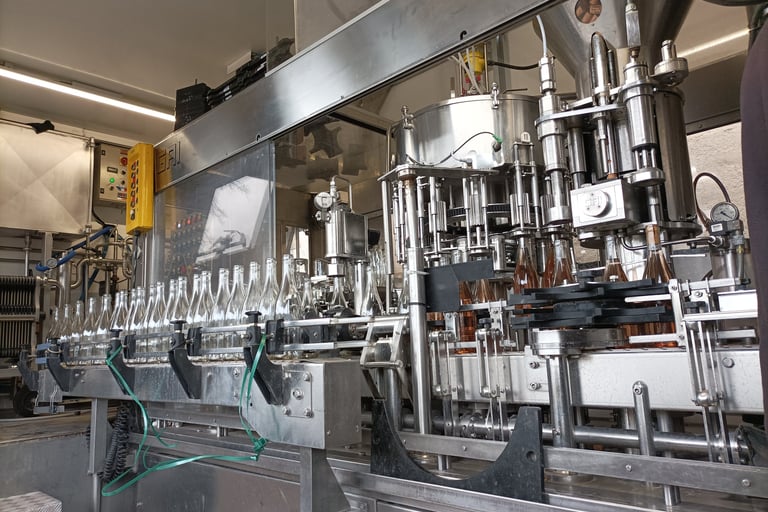

These mobile bottling units are common throughout France. While some larger enterprises and cooperatives may have their own bottling plant on site, many independent family estates don't, and will wish to have their storage tanks empty before the harvest. The units can bottle around 14,000 bottles a day , and must be booked weeks in advance. A larger enterprise may call upon their services three or four times a year, and generally begin in the spring with their whites and rosés from the previous season.
It is traditional in France for growers, be it of vines, olives or fruit, to live in the town or village, while their land lies close by . The large estate owner , living in his chateau is rare . This wine producer makes and conditions his wine in the cellars at his home in the main street, while his land straddles the hillside above. The lorry must park close to his chai in order to pump the wine from his storage tanks. And so, look closely at the label on your bottle of wine . Things may not always be exactly as they seem. But this is certain: the wine may still be classed as having been bottled on the property, and the grapes will have matured under an intense French sun amidst rolling hills and terraces of enormous beauty. And if you have chosen wisely, it will taste absolutely delicious, wherever the bottling has taken place.


Cave Cooperatives.
Throughout France you will also see large 'cave cooperatives' where many smaller growers often take their grapes to be processed. During the vendange , or harvest, the roads become very busy as small growers trundle along on their narrow tractors pulling trailer loads of grapes, to be crushed , and stored in giant vats. Once built of concrete, these vats have been steadily replaced, and are now almost exclusively made of stainless steel. If the grapes from a producer are kept separate, his wine may still be classed as chateau or domaine bottled. The larger majority of grapes however are combined . The wine that is produced may still retain the appellation of the region.
And so, when you buy a bottle of wine, look carefully at the label as there is a lot of information to digest. Things are not always as straight forward as they may seem. But then, you must forgive me if I am a little sceptical. If you enjoy the taste of a wine , then go for it, whatever its provenance.


